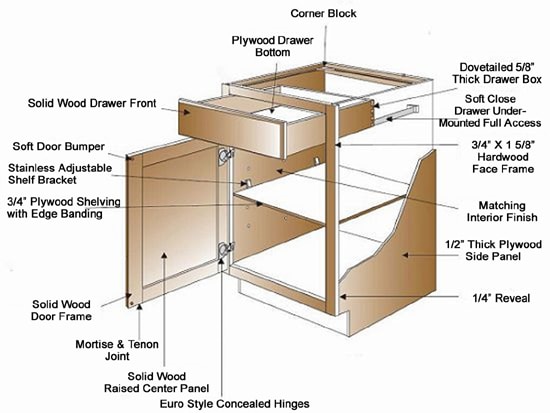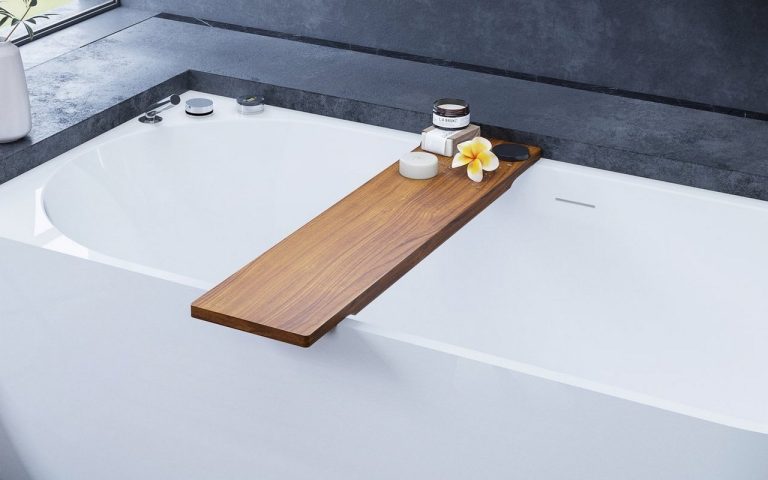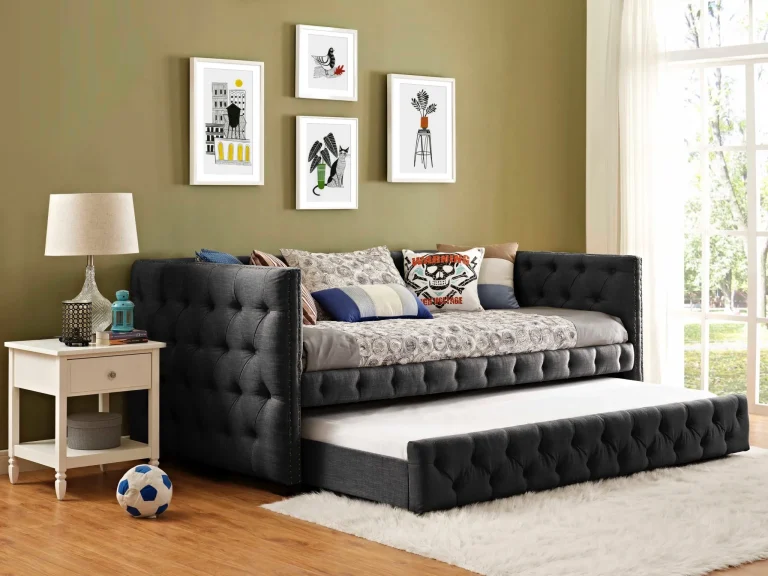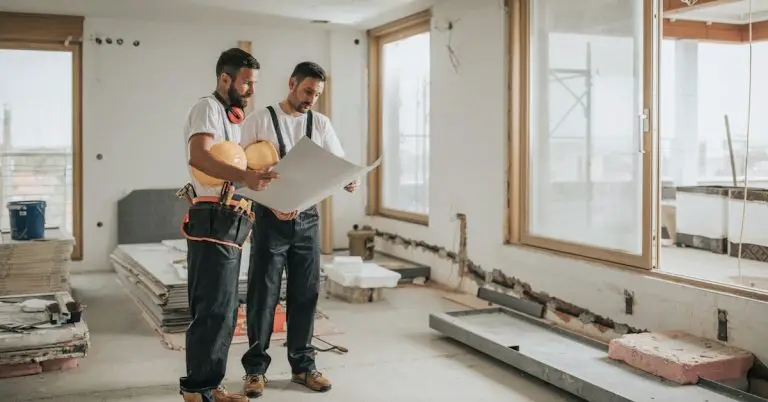How Are Cabinets Joined?
Cabinets are a common feature in many homes and businesses, but how are they joined together? Cabinet joinery is the process of joining the individual components of a cabinet together using hardware, adhesive, or other methods. This joinery is an important part of the construction process, as it ensures that the cabinet will be able to support the weight of the items it is designed to store. Different joinery methods are used depending on the type of cabinet, such as face frames, butt joints, dowel joinery, and biscuit joinery. With the right joinery techniques, cabinets can be constructed to last for years.
Types of Cabinet Joinery
Cabinets, whether for the kitchen, bathroom, office, or any other space, are an essential part of any interior design. But how are they joined together? Cabinet joinery refers to how the different components of a cabinet are connected. There are several types of joinery techniques used to join cabinets together, each with its advantages and disadvantages.
Dovetail joinery is a popular choice for cabinet construction. This method of joinery uses interlocking notches to join two pieces of wood together, resulting in a strong and attractive connection. Mortise and tenon joinery is another common option. This type of joinery uses a slot cut into one piece of wood that is then filled with a tongue cut into a separate piece. This joint is strong and can withstand a lot of pressure.
Pocket screws are a modern method of joinery and are often used for assembling cabinet boxes. This technique involves drilling a hole in one piece of wood and then inserting a screw into the corresponding hole in the other piece. This joint is strong and fast, but it isn’t as attractive as other types of joinery.
Biscuit joinery is another common method of joining cabinets. This type of joinery involves inserting small oval-shaped pieces of wood called biscuits into grooves cut into each piece of wood. The biscuits are then glued into place to create a tight and secure connection. This type of joinery is strong and easy to use, but it can be difficult to disassemble if repairs are needed.
No matter what type of joinery is used, cabinets must be properly connected to ensure that they last for years. Understanding the different types of joinery available can help you choose the best method for your project and ensure that your cabinets look great and stay strong for years to come.
Benefits of Different Types of Joinery
Joinery is an essential part of cabinet construction, as it is the method used to join the various parts of the cabinet together. Joinery can be done in several ways, each with its unique benefits and drawbacks. Understanding the differences between the different types of joinery will help you make the best decision when it comes to constructing your cabinets.
The most common types of joinery used to construct cabinets are butt joints, dowel joints, and biscuit joints. Butt joints are two pieces of wood that are joined together with screws and glue. This method is strong and durable, but can be difficult to keep all the screws in place and get a tight fit. Dowel joints are two pieces of wood that are joined together with wooden dowels. This method creates a strong joint but requires precise measurements and a lot of time. Biscuit joints are two pieces of wood that are connected with small wooden biscuits. This method is fast and easy and provides a tight and secure fit.
Each type of joinery has its unique benefits and drawbacks, and it is important to understand them before deciding which one to use in your project. Different joinery methods may require different tools and techniques, so make sure you do your research. With the right amount of knowledge and skill, you can create beautiful and durable cabinets with any of these joinery methods.
Preparation Steps for Joining Cabinets
When it comes to joining cabinets, the process begins with careful preparation. To ensure a strong and secure connection, the cabinets must be accurately aligned, securely attached, and properly sealed. In this article, we explore the essential steps for preparing cabinets for joining.
To start, it’s important to align the cabinets to ensure that the doors and drawers are even and the connection points are flush. This step can be done by hand or with a jigsaw. If using a jig saw, be sure to use a sharp, fine-tooth blade.
Next, the cabinets must be securely attached. Common attachment methods include screws, nails, and dowels. To prevent movement and ensure a strong connection, it’s important to use the correct fasteners and secure them appropriately.
Finally, the connection points must be properly sealed. This is important for both aesthetic and functional purposes. Common sealing methods include caulk and wood glue. Whatever the method, the seal must be airtight to ensure that the cabinets are securely joined and water-resistant.
By properly following these steps, you can make sure that your cabinets are securely joined and ready for use. With a little preparation and the right materials, joining cabinets is a relatively simple process.
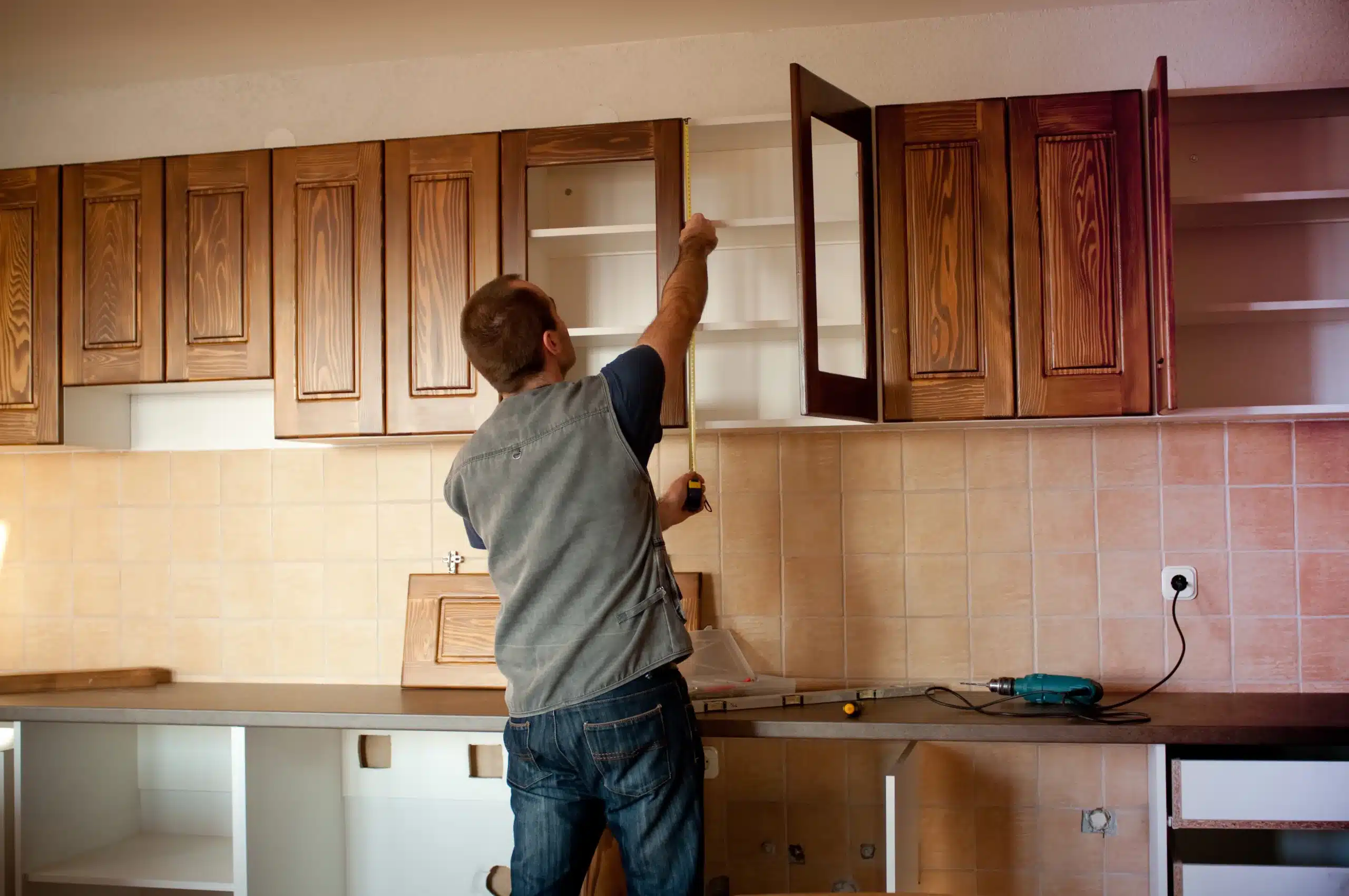
Credit: ootwc.com
Tools and Materials Needed for Cabinet Joinery
When it comes to building cabinets, joinery plays a critical role in ensuring the strength and durability of the end product. But what exactly is cabinet joinery and what tools and materials are needed for successful cabinet construction?
Cabinet joinery is the process of joining two or more pieces of wood to form the structural basis for a cabinet. This process involves cutting and assembling a multitude of pieces of wood to create a secure and sturdy structure. With the right tools and materials, the joinery process can be relatively straightforward.
To complete the joinery process, several tools are necessary. Common tools used for joinery include saws, chisels, drills, and routers. These tools are essential for creating the necessary cuts and holes to join the pieces of wood together. Additionally, clamps are also necessary for keeping the pieces of wood firmly in place while they are being worked on.
In addition to the tools used for cabinet joinery, a few essential materials are also required. These materials include wood glue, screws, nails, and dowels. Wood glue is used to bond the pieces of wood together, while screws, nails, and dowels provide additional structural support and stability.
Cabinet joinery is an essential skill for any aspiring woodworker. With the right tools and materials, joinery can be a relatively straightforward process. By understanding the basics of joinery and the necessary tools and materials, anyone can build a secure and sturdy cabinet.
Step-by-Step Instructions for Joining Cabinets
Cabinets are an essential part of any home’s design and construction. Without them, it would be difficult to store items and keep them organized. Cabinets also add to the aesthetics of a room. However, before you can enjoy the beauty of a cabinet, you need to know how to join them together. There are several methods of joining cabinets, and this article will provide a step-by-step guide to help you through the process.
- First, you’ll need to decide which type of cabinet you’re joining. There are several common types, including face-frame, frameless, and inset. Each type of cabinet requires different joining methods, so it’s important to choose the right one. Once you’ve decided on the type of cabinet, you can move on to the next step.
- Next, you’ll need to decide which material you’re using to join the cabinets. Common materials used for joining cabinets include screws, nails, and dowels, but there are many other options. You’ll also need to make sure you have the right tools for the job. Once you have the right materials and tools, you can move on to the next step.
- The final step is to join the cabinets. This can be done in several ways, depending on the type of cabinet and materials used. Generally, you’ll need to secure the cabinets together with screws or nails, and then use wood glue to ensure a strong connection. Once the cabinets are joined, you can add additional hardware, such as hinges or handles.
Joining cabinets is not a difficult task, but it’s important to take your time and make sure everything is done properly. Following these step-by-step instructions will ensure you have strong, durable cabinets that look great and last for years to come.
Common Problems and Solutions for Cabinet Joinery
Cabinets are an important and prominent part of any kitchen or bathroom design. When it comes to their construction, joinery plays a major role in ensuring the strength and stability of the cabinets. However, without expert knowledge and experience, cabinet joinery can be a tricky and daunting task. In this blog, we’ll explore the common problems and solutions for cabinet joinery.
For starters, one of the most common issues when it comes to cabinet joinery is fixing the cabinets to the wall. To do this, it’s important to ensure that the cabinet is securely fastened to the wall. This can be done using screws or nails, but it’s important to take care to ensure that they are placed in the correct locations and that the screws or nails are of the correct size.
Another common problem is making sure that the cabinets are level and even. This is especially important if the cabinets are to be installed in a pre-existing wall. To make sure that the cabinets are level, a spirit level and shims can be used to adjust the cabinet until it is level.
Finally, it’s important to ensure that the joinery is secure and tight. If the joinery is too loose or poorly constructed, the cabinets will be prone to wobbling and eventual collapse. To avoid this, make sure that the joinery is properly constructed and that the joints are tight and well-secured.
In conclusion, cabinet joinery is a crucial part of cabinet construction and it’s important to ensure that it’s done correctly. If the joinery is poorly done, it can lead to faulty cabinets and potential accidents. For this reason, it’s important to take the time to understand the basics of cabinet joinery and make sure that the joinery is done properly.
Tips for Obtaining Professional Results
When it comes to joining cabinets, there are a variety of methods that can be used to achieve a professional result. If you are unsure of what type of joinery to use, it is best to consult a professional who can assess your needs and recommend the best solution. Here are some tips to help you obtain the best results when joining cabinets:
- Choose the right type of joinery. Depending on the type of cabinet you are joining, different joinery methods can be used. Popular joinery methods include mortise-and-tenon joints, pocket hole joinery, biscuit joinery, and dowel joinery.
- Use the right tools. To ensure that the joints are properly aligned, it is important to use the right tools for the job. Quality tools like saws, chisels, joinery jigs, and routers are essential for accurate joinery.
- Take accurate measurements. To ensure that the cabinet is securely joined, it is important to take accurate measurements of the components. Use a measuring tape and mark the measurements on the wood before cutting.
- Use clamps to hold the joint. Clamps are great for securing the joint while the glue dries. Make sure to use enough clamps to hold the joint securely in place.
- Sand the joints. Once the glue has dried, use sandpaper to remove any excess glue or residue. Sanding the joints will give them a smooth finish and ensure that the joints are securely joined.
By following these tips, you can achieve professional results when joining cabinets. Make sure to consult a professional for more detailed advice on the best type of joinery for your project.
FAQs About the How Are Cabinets Joined?
What type of joinery is most commonly used to join cabinets together?
The most common type of joinery used to join cabinets together is butt jointing, which is a type of joinery that uses screws or nails to attach two pieces of wood.
How can I make sure my cabinets are securely joined?
To ensure your cabinets are securely joined, make sure to use the proper joinery, use quality hardware like screws and nails, and use wood glue to provide additional support.
How can I make sure my cabinets are level when joining them?
To make sure your cabinets are level when joining them, use a level and shims to ensure the cabinets are level before securing them with joinery.
Conclusion
Cabinets can be joined in a variety of ways, including using metal connectors, pocket screws, butt joints, and cam locks. The type of joint used will depend on the material used and the desired strength of the joint. Joining cabinets properly is important to the overall look and function of the finished product. Taking the time to research the best method for joining cabinets will ensure that the end product is both attractive and sturdy.

